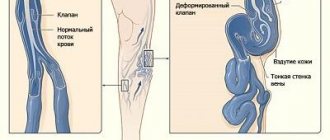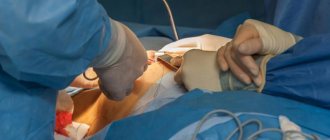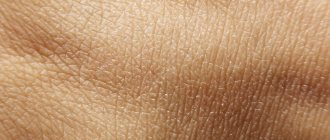Photos before and after Reviews Videos Rehabilitation Prices Analyzes Questions and Answers
One of the most difficult plastic surgeries in terms of recovery is abdominoplasty. And this is natural, because tummy tuck can sometimes be quite extensive, and the body requires much more time and effort to recover after it.
The patient spends from one to three days in the hospital, depending on how extensive the intervention was and how the patient feels. During abdominoplasty, the patient is provided with drainage – these are special silicone tubes. They help get rid of excess fluid that may accumulate in the operated area. Drainage tubes are removed either during the first dressing or two days after abdominoplasty.
Dressings are carried out two to three times a week until the sutures are removed, which occurs approximately on the 14-15th day after abdominoplasty. Almost always, when performing abdominoplasty, self-absorbable threads are used, which will eventually dissolve on their own and will not need to be removed.
As a rule, the recovery period after abdominoplasty depends on the age of the patient and the volume of abdominoplasty performed.
Get ready for
that the first weeks after abdominoplasty you will be bothered by postoperative swelling and pain in the abdominal area. Painful sensations are neutralized by taking painkillers. During the rehabilitation period, the plastic surgeon prescribes painkillers, antibiotics, diet and limited physical activity.
In order for rehabilitation after tummy tuck to go faster and the results of the operation to be immediate, it is necessary to strictly adhere to a number of rules and recommendations
your plastic surgeon.
The first days after tummy tuck:
- The pain goes away after taking painkillers;
- You will be able to eat only light food; in the future, your plastic surgeon will create a special diet for you during the entire rehabilitation period;
- It is forbidden to get out of bed for the first 24 hours; the first attempts to get up can only be made the next day and only with the help of medical personnel.
Photos before and after tummy tuck.
More photos in the BEFORE AND AFTER photo gallery
They asked an expert: what is important to know about abdominoplasty
There are cases when all methods have already been tried, but it is not possible to get rid of excess fat or skin on the abdomen.
And if scars or stretch marks are added to this, it’s time to completely despair. Perhaps you should decide on abdominoplasty? Svetlana Gagarina, ( @doktor_gagarina ) plastic surgeon, MD, professor
Elena Chirikova, ( @doctor_chirikova ) plastic surgeon, PhD, member of OPREH, ISAPS
It would seem that nowadays people are trying to avoid serious surgical interventions to improve their appearance, preferring beauty injections and various hardware technologies. But it often happens that plastic surgery is the only way to correct the figure or eliminate other disorders and imperfections. Therefore, an operation such as abdominoplasty (surgical abdominoplasty) still remains relevant. “Abdominoplasty is a fairly popular operation,” says Elena Chirikova, “and takes third place in my practice after blepharoplasty and breast surgery.”
Indications
“Abdominoplasty is performed only when indicated,” says Svetlana Gagarina. — At the same time, the list of indications is quite wide and is divided into medical and aesthetic. For example, diastasis (separation of the abdominal muscles due to weakening or excessive stretching of the muscles) is a medical condition. In this case, abdominal wall plastic surgery is performed to suturing the diastasis using, for example, mesh material. And there are aesthetic indications. First of all, this includes patients after childbirth, when the anterior abdominal wall has sagged, then patients after massive weight loss in one way or another, when the skin is greatly stretched and all this looks unaesthetic. And finally, overweight patients who want to lose weight and get rid of the flap of skin (apron) that forms with excess weight and causes a lot of inconvenience. Therefore, I cannot say that this is a rare operation, but it is a surgical operation and not a cosmetic procedure. It requires hospitalization, drainage, frequent dressing changes and long-term rehabilitation.”
Improvements
Abdominoplasty is performed under general anesthesia and lasts from two to four hours. In the classic version, an incision is first made in the lower abdomen to separate a flap of skin up to the ribs, and the navel is peeled away. Then excess fat and skin are removed, and diastasis is sutured if present. Afterwards, the skin is stretched, the navel is moved to a new place and stitches are applied. If we say what’s new when performing abdominoplasty, then the operation has not undergone any absolutely innovative and obvious changes. “The incision is made in the same place as before,” explains Svetlana Gagarina, “its lower point is located approximately 7 cm above the commissure in the pubic area, and then along the line of the natural fold. However, there are some nuances, not too new, but still. For example, it was suggested not to work too wide, but to perform liposuction of the upper flap. That is, now abdominoplasty is very often accompanied by lipoaspiration. And not for the purpose of reducing volume, but to make the flap of skin more mobile, without peeling it off. Otherwise, the likelihood of a complication such as a seroma in the anterior abdominal wall increases sharply.”
Laparoscopy
There are several types of abdominoplasty, including endoscopic. “It is performed according to indications, usually for suturing diastasis,” explains Svetlana Gagarina. - This is done when there is no excess skin, but only diastasis. So why make an incision when you can sutured the muscles laparoscopically. And then, through four punctures - one for the camera and three for the manipulator - the diastasis is sutured from the abdominal cavity with a special thread. And the excess skin is simply spread out using a lipoaspiration tube through the same punctures so that there is no “slide.”
Preparation
Before any operation, certain requirements must be met. For this purpose, lists of tests and examinations have been developed, including those that are required before abdominoplasty. “Preparation is extremely important,” says Svetlana Gagarina. - For example, it is very advisable not to smoke. It is necessary to look at the function of external respiration, because when we suture the anterior abdominal wall, the diaphragm rises, and accordingly, the excursion of the lungs decreases, and if a person smokes, congestion in the lower sections and, as a result, pneumonia may occur. You should also check the condition of the vessels of the lower extremities to ensure that there are no floating blood clots, which can be extremely dangerous. It is advisable to do an ultrasound of the abdominal cavity, especially for obese people, so that there are no surprises in the operating room, because there may be non-visualizable hernias. Therefore, you need to be extremely responsible in your preparation.” Abdominoplasty is a serious surgical operation, but it is often required for older patients. Is it worth the risk? “I have never had to refuse abdominoplasty to patients even with diabetes mellitus and hypertension in the compensation stage,” says Elena Chirikova, “but, of course, they were additionally examined and prepared for this difficult operation. The oldest patient I have performed abdominoplasty on is 64 years old. It must be said that older patients tolerate such an operation no worse than younger ones, their examination just needs to be more thorough.”
Complications
Everyone - both surgeons and patients - wants the operation to be successful, without complications and to give a good result. But complications still happen. “Surgery is surgery,” states Svetlana Gagarina. - Anything can happen. For example, due to a large detachment of the skin flap, fluid accumulation is possible - this is a seroma, so we put special sutures on the upper flap so that it rubs less, and to reduce the production of this fluid, we install drainages. Serious complications can arise if too much liposuction is performed. Recently, one doctor published a post that he “pumped out” 14 liters of fat and got such a beautiful, toned stomach... But, looking at the before and after photographs of the patient, it is clear that ischemic necrosis has already begun in the navel area. And this person displays such photos as an achievement! Well what can I say? Why do you need to pump out such volumes? And what will the patient have now - scars and a hole in her stomach! That’s why patients often come today to have unsuccessful operations corrected, which frustrates me beyond words.” “Unfortunately, unsuccessful operations have to be redone more often than we would like,” notes Elena Chirikova, “and the main reason for these alterations is improper planning and execution of the primary operation. Many consequences can be corrected, for example, necrosis. It is not very common, but can occur for a number of reasons, such as excessive excision of the skin flap, severe tension on the wound edges and impaired microcirculation. The main thing is that his treatment is correct, then, perhaps, it will be possible to avoid repeated surgery or reduce it to a minimum.”
Rehabilitation
Since abdominoplasty is a surgical operation, it requires long-term rehabilitation. “The first week is difficult,” says Svetlana Gagarina, “there will be pain, a feeling of tension, discomfort. After a week, the stitches are removed, after two weeks the gross swelling more or less goes away. Then you need to wear compression garments for two months. And then the final recovery takes place up to six months. Of course, in order to speed up the process, improve the effect and make the seams less noticeable, you can additionally prescribe a number of procedures (for example, hardware techniques), but all this is possible only according to indications.” “The quality of the sutures depends not only on the suture material and the skill of the surgeon, but also on the characteristics of the patient’s body,” says Elena Chirikova, “but in most cases, a year after the operation, the sutures become barely noticeable. I recommend to my patients that after two weeks they begin gentle physical exercises and gradually, listening to their feelings, increase the load. If after surgery the patient leads an active lifestyle, then healing proceeds faster, since microcirculation and blood oxygenation increase with movement. In general, movement is life!” Important
Abdominoplasty should be performed only by highly qualified specialists with extensive experience.
Note: “It should be understood that abdominoplasty does not fight obesity; it is a misconception and an illusion. Abdominoplasty is nothing more than a correction. But if an overweight person has had this operation and sees that it has become much better, this works as a powerful motivator and is an incentive to continue to lose weight,” says Svetlana Gagarina
What are the indications for this operation?
The most common reason for performing abdominoplasty is women's dissatisfaction with their belly after childbirth. If the problem of stretch marks on the skin, weakening and separation of the rectus abdominis muscles cannot be solved conservatively, then plastic surgeons come to the rescue.
Another group of patients are those who have excess soft tissue on their abdomen, forming a sagging “apron.” Typically, such disorders are typical for women over the age of 45. But men with similar symptoms often turn to plastic surgeons. Finally, the smallest category of patients are those who have excess skin on their abdomen as a result of rapid weight loss.
What tests and examinations need to be done before abdominoplasty?
Abdominoplasty is a surgical operation, so before it it is necessary to undergo a standard preoperative set of examinations:
- clinical and biochemical blood tests;
- blood sugar levels;
- determination of blood group;
- blood clotting test (coagulogram);
- clinical urine analysis;
- analysis for the presence of HIV, syphilis, hepatitis B and C;
- electrocardiogram;
- fluorography;
- examination by a therapist and gynecologist (for women).
Is it possible to eliminate excess fat with abdominoplasty? How long will this effect last?
Yes, in some cases abdominoplasty is combined with liposuction. Moreover, the operation itself involves the removal of a certain amount of subcutaneous fat. But it is important to remember that the main goal of abdominoplasty is to correct the contours of the figure and form a flat stomach, and not to reduce body weight. If the patient simply needs to remove excess fat deposits, then simple liposuction is sufficient, and there is no need for tummy tuck.
Of course, surgeons do not guarantee that after removing excess skin, the abdomen will retain its shape throughout the patient’s life. To do this, a person needs to independently monitor his lifestyle, diet, give up bad habits, etc.
How does a consultation with a plastic surgeon proceed? What are the stages of the operation itself?
The main task of doctors during a consultation is to assess the real need for abdominoplasty in a particular patient and identify possible contraindications. During the conversation, the specialist will discuss with you all the details of the upcoming intervention, including the need and volume of liposuction.
On the day of surgery, as a rule, the patient is photographed to visually assess the results of abdominoplasty.
Abdominoplasty is performed under general anesthesia. First, liposuction is performed, then incisions are made along pre-marked lines on the abdomen. After this, the muscles of the anterior abdominal wall are sutured and their discrepancies are eliminated - this is the key to getting a flat stomach. This is followed by removal of excess subcutaneous fat (usually in the form of a single flap), relocation and fixation of the navel in its natural position. The operation ends with suturing and bandaging. The total duration of the intervention, depending on its volume, ranges from 1 to 4 hours.











